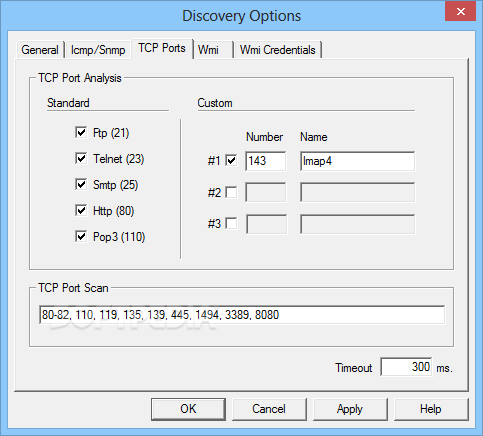

The northbound API of the controller is intended to provide an abstraction of the network devices and topology. These applications can quickly and dynamically make network changes as the need arises.
#Networkview download software
The controller offers a northbound API, allowing software applications to be plugged into the controller, and thereby allowing that software to provide the algorithms and protocols that can run the network efficiently. An example of a southbound API is the OpenFlow interface that the controller uses to program the network devices. These terms derive from the fact that in most diagrams the applications are depicted above (i.e., to the north) the controller while devices are depicted below (i.e., to the south) the controller. In the context of Open SDN, the terms northbound and southbound are often used to distinguish whether the interface is to the applications or to the devices. The centralized software-based controller in SDN provides an open interface on the controller to allow for automated control of the network. This kind of virtualization lies at the heart of how we will define Open SDN in this work. 1 Working with the network through this configuration abstraction is really network virtualization at its most basic level. To return to the programming analogy, consider how unproductive software developers would be if they always needed to be aware of what is actually involved in writing a block of data to a hard disk when they are instead happily productive with the abstraction of file input and output. Finally, the configuration abstraction, which is sometimes called the specification abstraction, must be able to express the desired goals of the overall network without getting lost in the details of how the physical network will implement those goals. This implies that whatever language(s) emerges from the abstraction needs to represent a sort of lowest common denominator of forwarding capabilities of network hardware. The forwarding abstraction allows the programmer to specify the necessary forwarding behaviors without any knowledge of vendor-specific hardware.

The distributed state abstraction provides the network programmer with a global network view that shields the programmer from the realities of a network that is actually comprised of many machines, each with its own state, collaborating to solve network-wide problems. In a similar manner, Shenker purports that SDN is a similar natural evolution for the problem of network control. For a historical analogy, note that today’s high-level programming languages represent an evolution from their machine language roots through the intermediate stage of languages like C, where today’s languages allow great productivity gains by allowing the programmer to simply specify complex actions through programming abstractions. They are derived from decomposing the actual complex problem of network control faced by networks today into simplifying abstractions. This asserts that SDN can be derived precisely from the abstractions of distributed state, forwarding, and configuration. Three basic abstractions forming the basis for SDN are defined in. Timothy Culver, in Software Defined Networks (Second Edition), 2017 4.1.3 Network Automation and Virtualization Users of NetworkView gave it a rating of 4 out of 5 stars.Paul Göransson. NetworkView runs on the following operating systems: Windows. The most prevalent version is 3.60, which is used by 100 % of all installations. It was initially added to our database on. The latest version of NetworkView is 3.60, released on.

It was checked for updates 31 times by the users of our client application UpdateStar during the last month. NetworkView is a Shareware software in the category Internet developed by NetworkView Software.
#Networkview download full
With more than 28000 entries in its SNMP and MAC addresses databases, it can be used from a FLOPPY DISK ! Full print and print preview capabilities for maps and lists. It can also poll the network and send an email when nodes are unreachable. NetworkView is a compact network discovery and management tool for the Win32 platform : in a few minutes, it will discover all TCP/IP nodes and draw a full graphical map (including routes) using DNS, MAC addresses, SNMP WMI, NetBIOS and TCP Ports information. Get a full graphical map of your network!


 0 kommentar(er)
0 kommentar(er)
